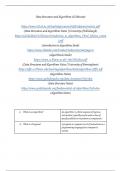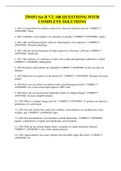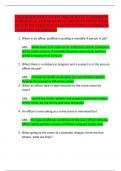Summary
Summary and Flashcards - Data Structures and Algorithm
- Course
- Institution
In depth coverage of algorithms and data structures. Covers algorithmic efficency, time and space complexity for all O notation (big 0, little 0, omega). Linear, quadratic to exponential algorithms. Kadane's algorithm, brute force algorithm. Summary of all sorting algorithms, trees (AVL, B-trees), ...
[Show more]






